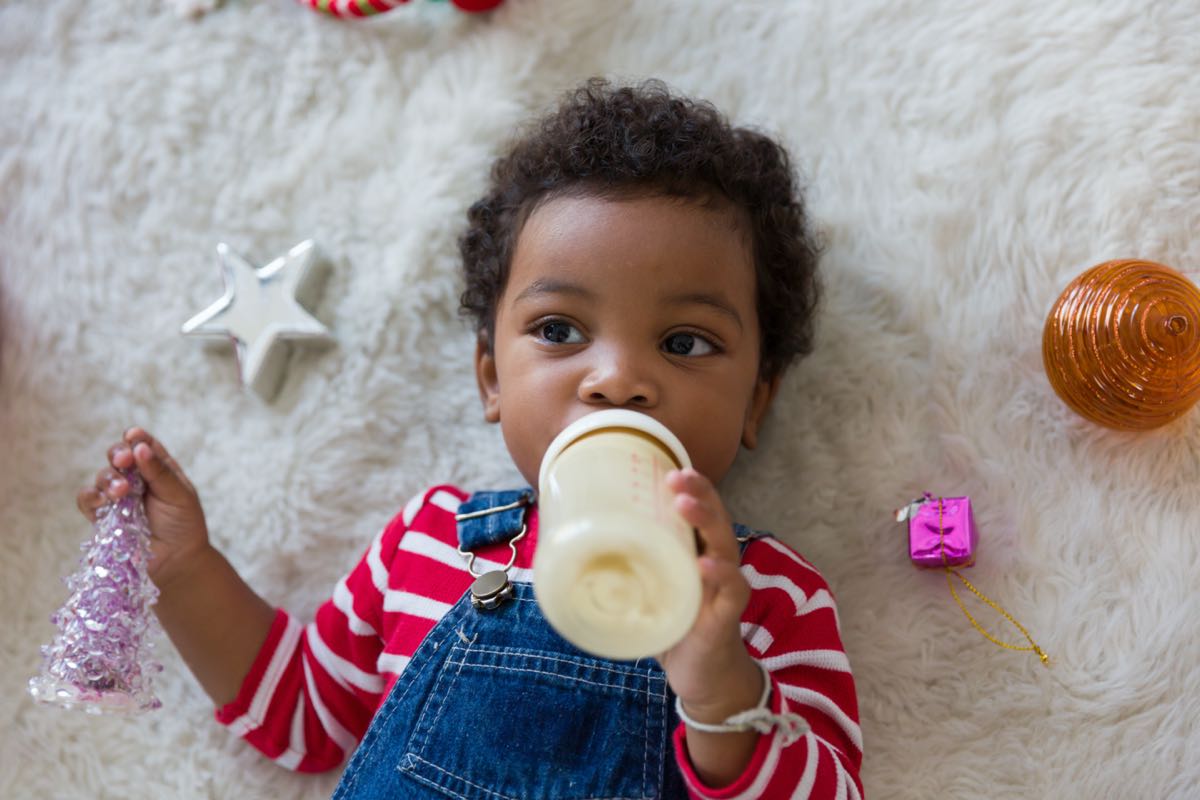Can I feed my baby formula and breastmilk?
Yes, this is called mixed feeding. This means feeding the baby with breastmilk for some of the time and giving the baby formula from a bottle or cup for the rest of the time. It’s also known as supplementing with formula.
Why mixed feeding may be used ?
Mix feeding a newborn or baby may be used for a number of reasons. The reasons for choosing mixed feeding may include:
- Your baby is very ill or having difficulty gaining weight
- Personal choice
- Returning to work
- Being separated from your baby for a short time
Will mixed feeding affect my breastmilk supply?
The more your baby feeds, the more breast milk you produce – this means that skipping breastfeeds and using formula instead may reduce your milk supply. If you are planning to mix feed it’s a good idea to talk to a healthcare professional, such as a child and family nurse or lactation consultant about ways to keep up your milk supply.
Bottle or Cup?
FEEDING WITH A BOTTLE
Breastfed babies aren’t used to using bottles as the sucking action is different for bottles compared to the breast so it may take some time for them to get used to this. Therefore if you are going back to work, it may be best to start a few weeks in advance. You may want to start by offering a bottle of expressed milk to help your baby to get used to sucking from a bottle.
Although babies can control the flow of breastmilk when they breastfeed, some may drink too much too soon when they switch to a bottle. It may help to try ‘paced feeding’ where you hold the baby upright to stop the baby from taking too much milk at the start of the feed. These tips may help:
Hold the baby in an upright position, supporting their head and neck with your hand rather than your arm.
Use a slow-flow teat.
Gently brush the teat down the middle of the baby’s lips, especially the lower lip. This helps the baby open their mouth wide so you can place the whole teat in their mouth as if they were breastfeeding. Let the baby take the teat rather than you push it into the baby’s mouth.
Tip the bottom of the bottle up just enough for the milk to fill the teat. As you continue the feed, you’ll need to let the baby gradually lean backwards so that the teat stays filled with milk. Keep the baby’s head and neck in line. The bottle will be almost vertical by the end of the feed.
Allow the baby to rest every few minutes so that it’s more like a breastfeed and helps stop the baby drinking too much too quickly.
Let the baby decide when to stop feeding – they may not need to drink all the milk in the bottle.
FEEDING WITH A CUP
A baby can feed from a cup from around 6 months of age. There are a few different cup options including sippy cups, non-spill cups and cups with their own straw – you and your baby can experiment to see which is best.
Combination Feeding Schedule
Every mother and child is different. The combination feeding schedule that you follow will depend on a few factors: your baby’s age and awake time, as well as your supply and comfort. Find the routine that works best for you, and you’ll figure out how best to weave formula into your feeding routine.
Helpful tips for mixed feeding
If you decide to use formula, do so gradually to give your baby time to adjust to formula milk.
Choose a quiet time to start so that you and your baby are relaxed.
It’s a good idea to introduce your baby to the cup or bottle at least two to three weeks before you return to work.
Babies are more vulnerable to infection because their immune system is less developed than an adult’s – careful hygiene may reduce the risk of your baby getting sick. Therefore it is important that all bottles, teats and any other feeding equipment are cleaned and sterilised before each feed.
When preparing infant formula, always follow the manufacturer’s instructions.
Make sure your baby’s carer understands how to prepare expressed breast milk or formula correctly.
Fresh expressed breastmilk should be stored in sterile bottles or bags in the fridge (but for no more than 72 hours)
It’s best to warm expressed breast milk by standing it in a container of warm (not boiling) water. Overheating or boiling breast milk can destroy some of its nutrients. Breast milk should not be heated or thawed in a microwave.
If your baby doesn’t finish a feed, throw the leftover formula or expressed breast milk away – don’t keep it for later.

